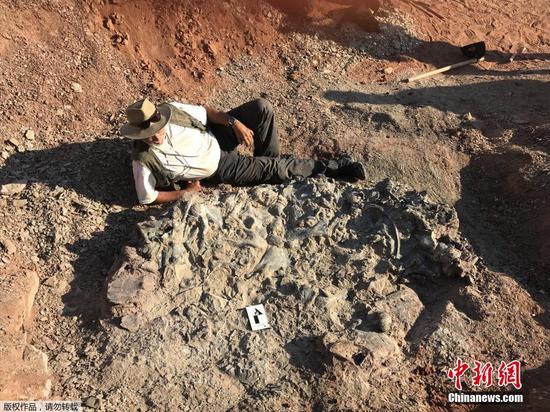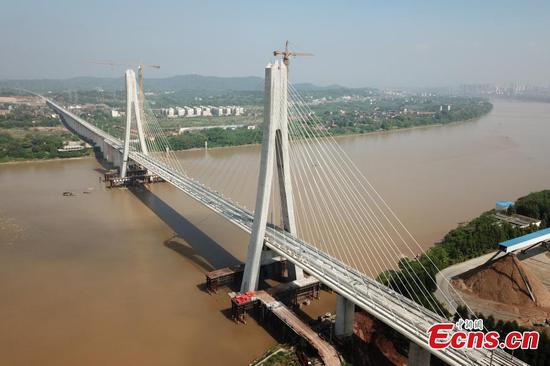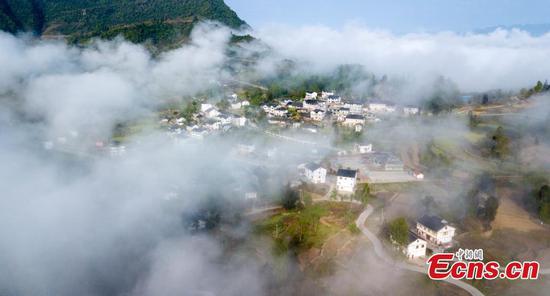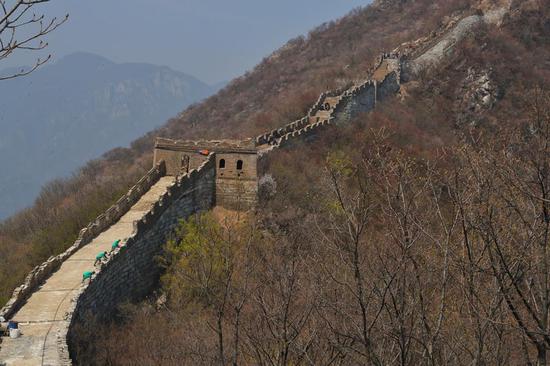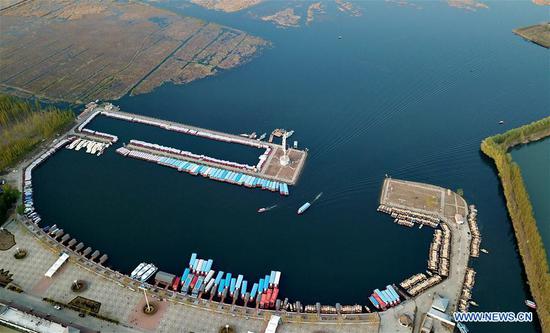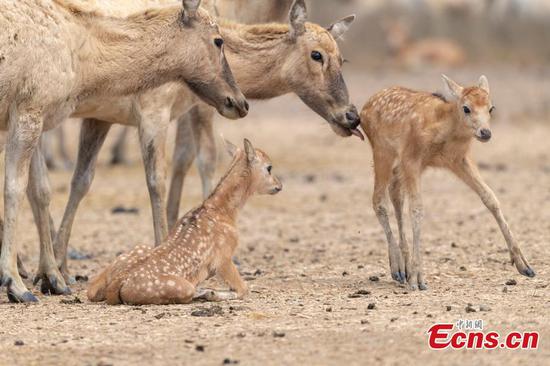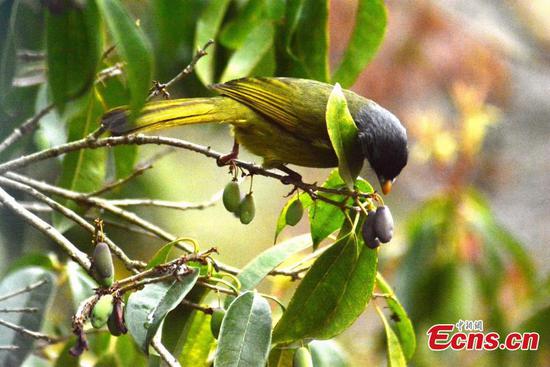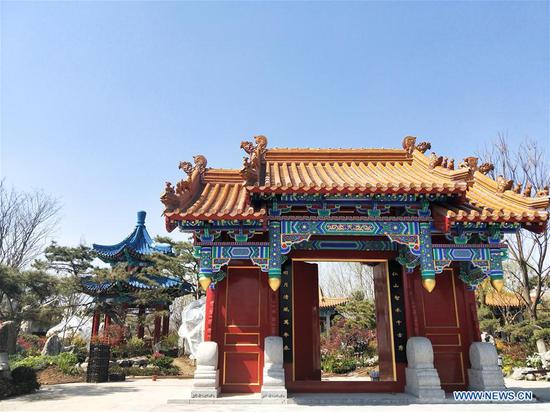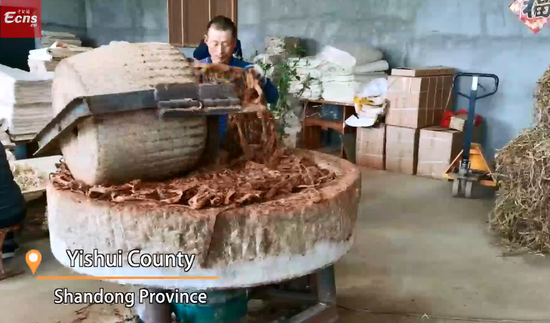
The completion of a joint project of China and Kazakhstan to renovate a water diversion sluice on the Sumbe River was celebrated on Wednesday. (Photo/Xinhua)
Two shared boundary projects mark their long cooperative relationship
Two water projects on boundary rivers between China and Kazakhstan are expected to bring benefits to people on both sides, the Ministry of Water Resources said.
The recent completion of one of them - a joint project to renovate a water diversion sluice on the Sumbe River - was celebrated on Wednesday. The other, which kicked off on Thursday, aims to build a mudslide-blocking dam on the Horgos River farther north.
The project on the Sumbe, a 61-kilometer boundary river, will facilitate water diversion to Kazakhstan, the ministry said. The river flows south from Kazakhstan, then turns southwest, forming a boundary with China's Xinjiang Uygur autonomous region.
In 2008 the two countries jointly built a water diversion sluice on the boundary section of the Sumbe River for agricultural irrigation. After a sedimentation problem developed on the Kazakhstan side, Kazakhstan proposed renovating the facility.
In 2012, the countries agreed to undertake the project to help Kazakhstan solve the problem, while leaving water diversion on the Chinese side unaffected. The project started in December 2017.
Tian Xuebin, vice-minister of water resources, said at the ceremony celebrating its completion on Wednesday that China-Kazakhstan relations have become a model for relations between neighboring countries involved in the Belt and Road Initiative, and the two countries have been carrying out pragmatic cooperation in the joint use and protection of boundary rivers under the China-Kazakhstan Joint Committee on Trans-Boundary River Utilization and Protection, which was established in 2001.
"This project ... embodies shared concepts of political mutual trust, reciprocity and cooperation," he said.
Yerlan Nysanbayev, Kazakhstan's vice-minister of agriculture, said the project is "another land-mark achievement" of cooperation concerning border rivers between the two countries, following the first China-Kazakhstan water diversion project on the Horgos River, which was completed in 2013 and irrigates more than 30,000 hectares of farmland.
According to the Ministry of Water Resources, China shares a border of about 1,700 kilometers with Kazakhstan, including 567 kilometers demarcated by rivers.
On Thursday, a groundbreaking ceremony for a mudslide-blocking dam on the Horgos River was held in Kazakhstan. It is expected to be capable of blocking about 9.8 million cubic meters of mud.
The Horgos, a boundary river, is 148 kilometers long. It is fed by 62 alpine rivers in surrounding areas. Of those, 21 are in China, 39 in Kazakhstan and two feed shared boundary rivers, according to the ministry.
Tian, the vice-minister, said that overflowing alpine glacial lakes could threaten the lives and property of people along the river, and the dam will help eliminate these risks.
"It is an important project that will benefit people from both countries. In the future, further cooperation on water resources will be carried out under the Belt and Road Initiative," he said.
Tian said engineers from both sides should optimize their designs, and that builders should concentrate more on the project's quality and safety to make the mudslide barrier dam an internationally advanced project and a new highlight of China-Kazakhstan cross-border cooperation.



















